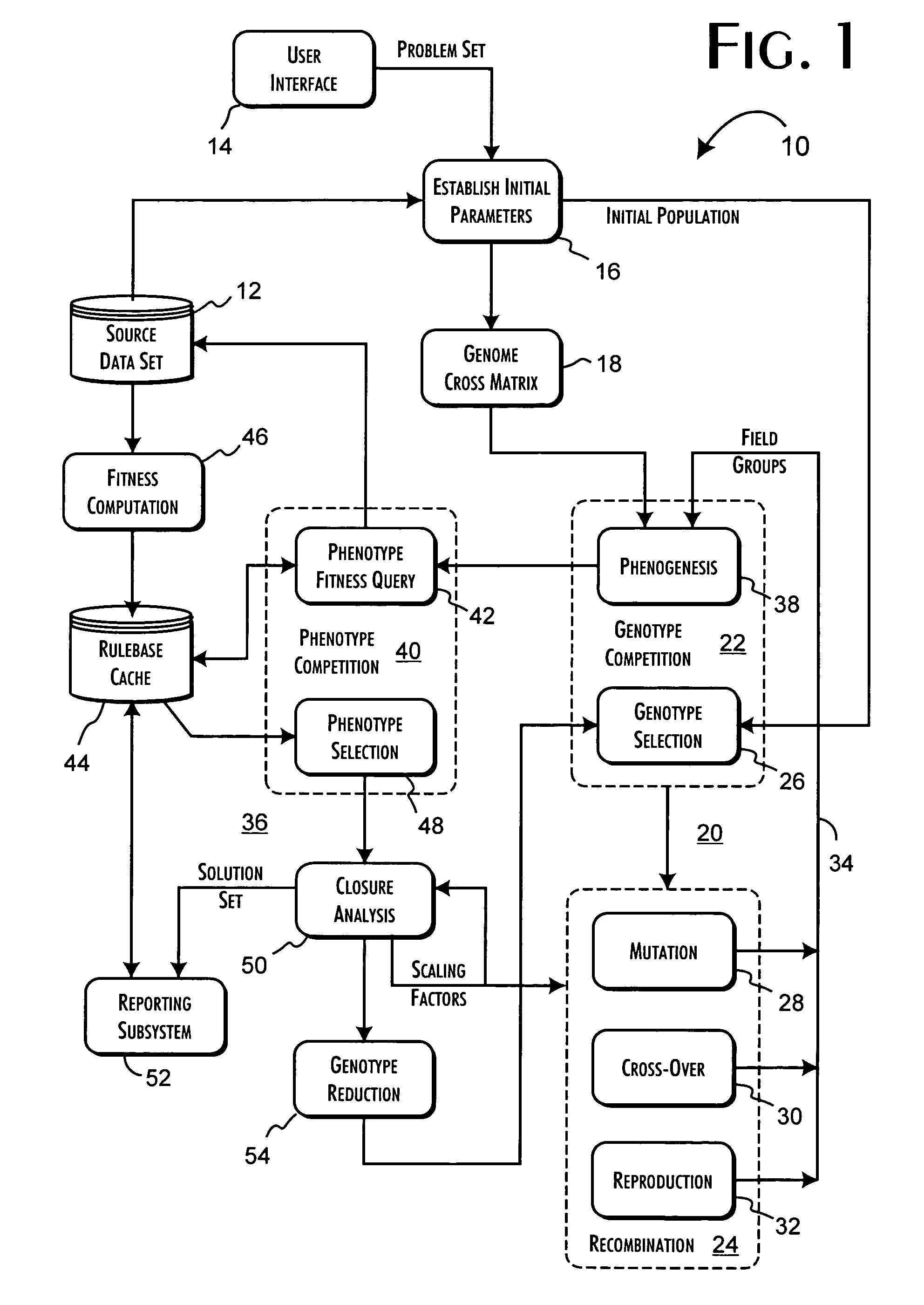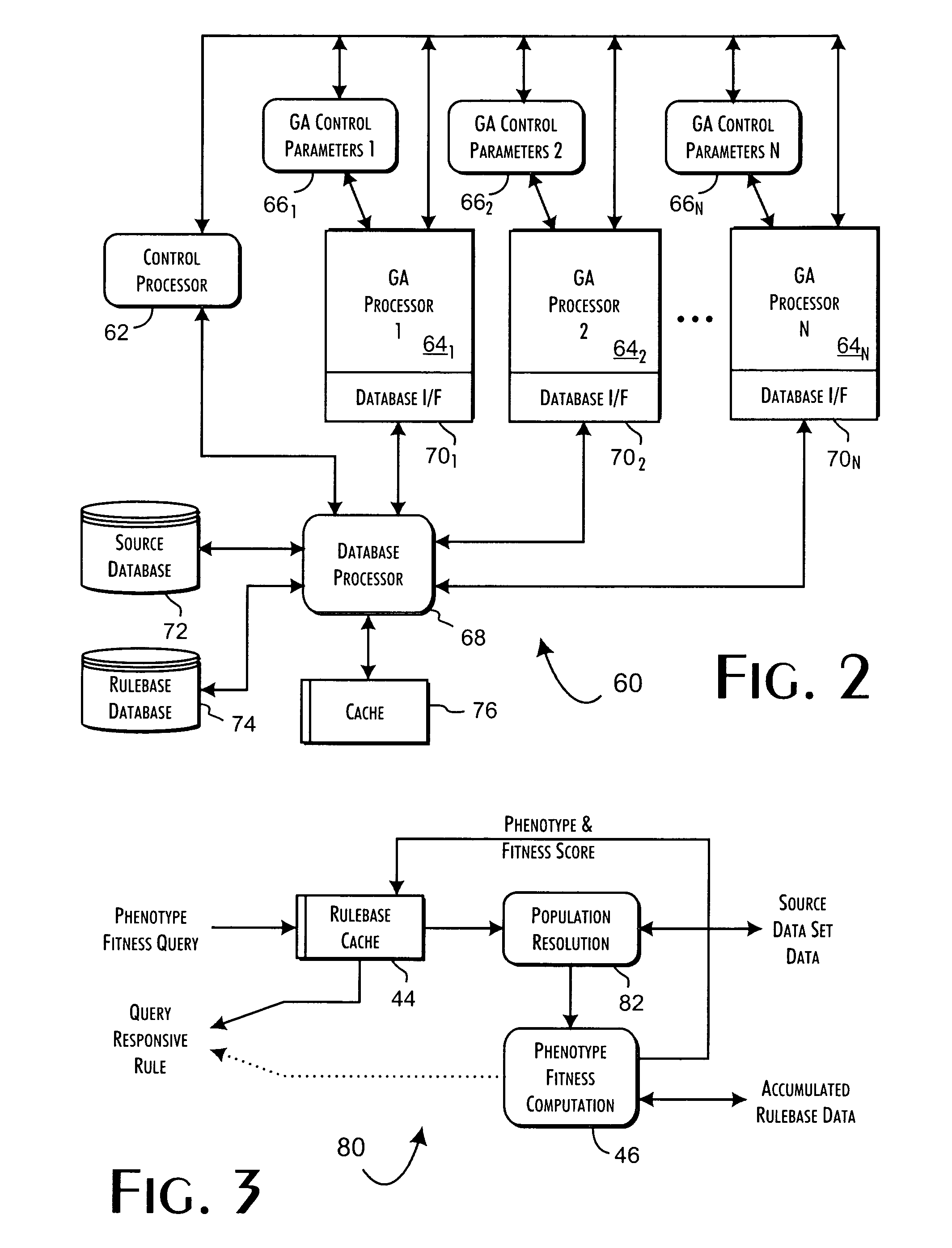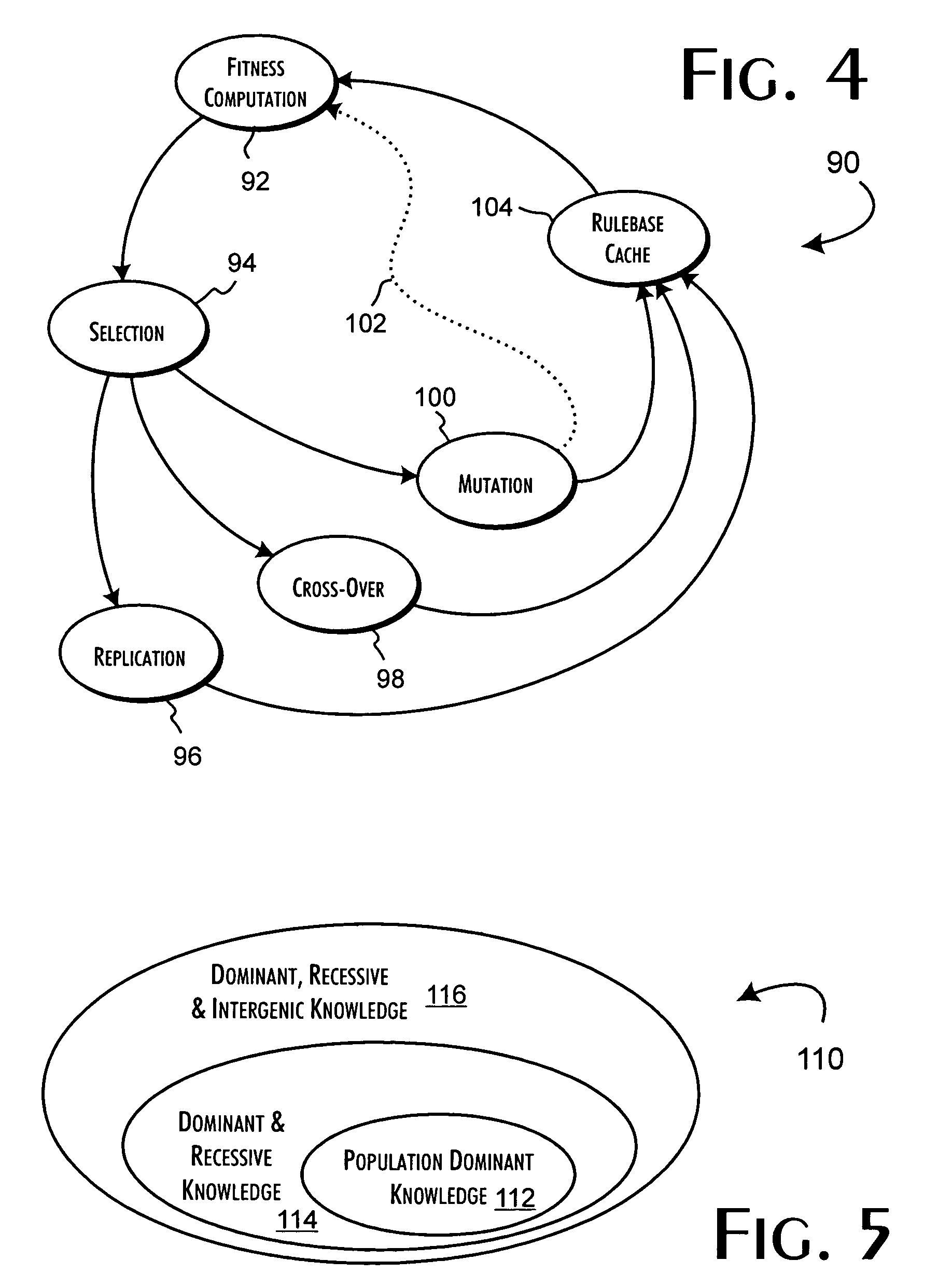Concurrent two-phase completion genetic algorithm system and methods
a genetic algorithm and two-phase completion technology, applied in the field of computational efficiency of genetic algorithms, can solve problems such as substantial removal of cache performance, and achieve the effects of reducing the size of population data sets, and reducing the number of errors
- Summary
- Abstract
- Description
- Claims
- Application Information
AI Technical Summary
Benefits of technology
Problems solved by technology
Method used
Image
Examples
Embodiment Construction
[0028]The present invention provides a highly effective, scalable, computer implemented genetic algorithm that is capable of reliably processing multi-variate fields and population sizes that are well suited to practical application and well beyond the comparable limits of conventional genetic algorithm implementations. In the following detailed description of the preferred embodiments of the present invention, like reference numerals are used to designate like parts depicted in one or more of the figures.
[0029]The present invention is applicable, in general, wherever a genetic algorithm may be used to analyze a population data set for the identification of an optimal solution set. In terms of the present invention, a population data set is composed of individuals having variate characteristics or fields that collectively define the genome of the population. Each individual within the population is represented by a set of fields, which may be a subset of the genome fields, that defi...
PUM
 Login to View More
Login to View More Abstract
Description
Claims
Application Information
 Login to View More
Login to View More - R&D
- Intellectual Property
- Life Sciences
- Materials
- Tech Scout
- Unparalleled Data Quality
- Higher Quality Content
- 60% Fewer Hallucinations
Browse by: Latest US Patents, China's latest patents, Technical Efficacy Thesaurus, Application Domain, Technology Topic, Popular Technical Reports.
© 2025 PatSnap. All rights reserved.Legal|Privacy policy|Modern Slavery Act Transparency Statement|Sitemap|About US| Contact US: help@patsnap.com



